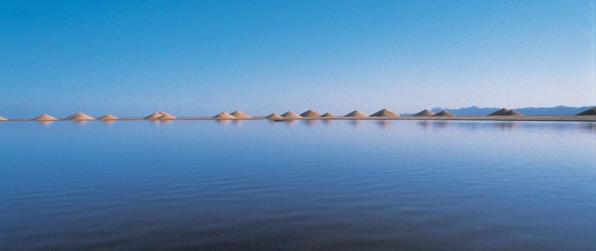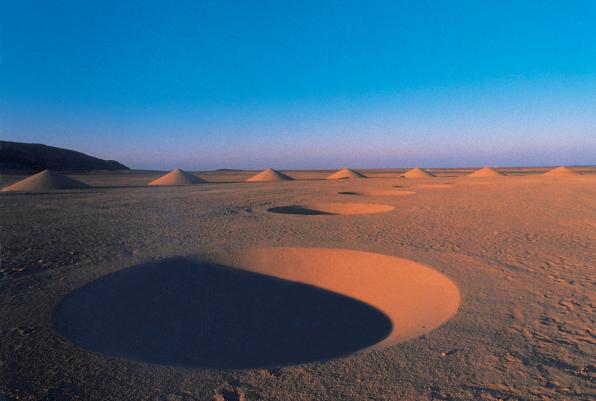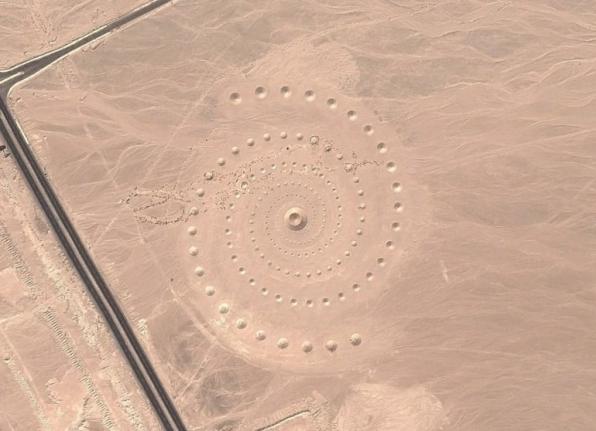No, it isn’t. It wasn’t made by aliens, internet.
The work, ‘Desert Breath’ is actually an art project initially created 17 years ago by a team of Greek artists. Now a short documentary about the installation has gone viral and across the globe thousands are suddenly discovering the work which has lain dormant for close to two decades. Why now?
Because, well, internet. And because it’s pretty cool.
The work, the result of a two year collaboration between installation artist Danae Stratou, industrial designer Alexandra Stratou, and architect Stella Constantinides, consists of two interlocking spirals, one made up of cones of sand, and the other of the inverse: the exact conical depressions left by the displacement of the sand. Both spirals emanate from a central W shaped section filled with water.
“Desert Breath” | Land Art Installation | By D.A.ST. Arteam, Egypt (1997) from Danae Stratou on Vimeo.
The work is enormous. 8000 cubic meters of sand were displace with the whole installation covering 100,000 square meters. It is meant to explore the concept of infinity in the world’s largest desert where it meets the immensity of the sea.

According to the artists, “in our mind’s eye the desert was a place where one experiences infinity. We were addressing the desert as a state of mind, a landscape of the mind. The point of departure was the conical form, the natural formation of the sand as a material. It is a site-specific work that grows out of our perception of the site itself. Located between the sea and a body of mountains at the point where the immensity of the sea meets the immensity of the desert. The work functions on two different levels in terms of viewpoint: from above as a visual image; from the ground a physical experience while walking the spiral pathway.”

Today the central pool is empty and the cones are slowly eroding. Eventually it will disappear entirely – although this is very much intended with Desert Breath, ‘through its slow disintegration, becoming an instrument to measure the passage of time.’

And it’s also interesting to note that while Desert Breath’s sudden popularity has an element of randomness, the passage of time was a necessary prerequisite for the sudden explosion of interest. The desert spiral was effectively rediscovered by curious users of Google Earth who recently spotted it and began researching the origins of the artwork that was completed in 1997 – i.e. a year before Google even existed as a company.